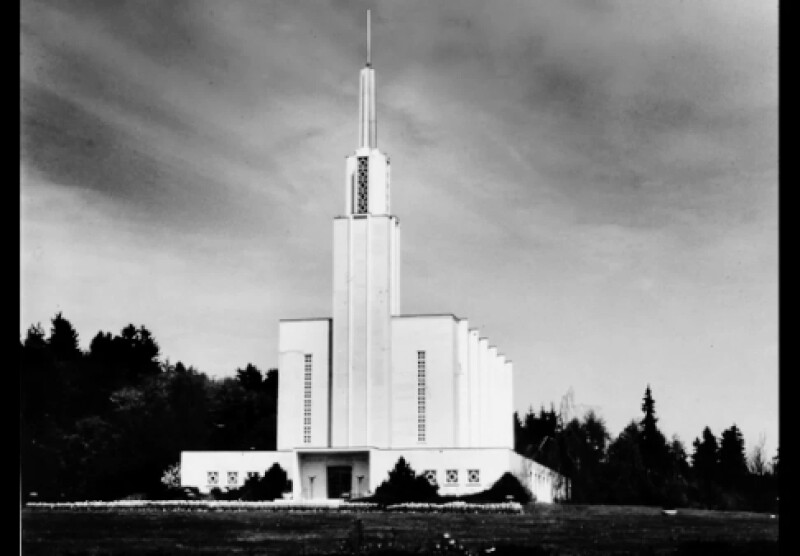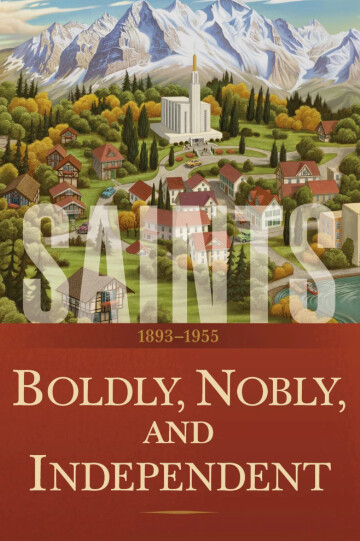Forty-three-year-old Gordon B. Hinckley rarely had a moment to rest. He had spent most of his working life as a Church employee, having begun his career as executive secretary of the Church’s Radio, Publicity, and Mission Literature Committee. For the past two years, he had served as executive secretary of the Church’s Missionary Committee. He was now involved in almost every aspect of the Church’s efforts to spread the gospel, from missionary training to public relations—and he had a hard time leaving his work at the office.
Gordon’s wife, Marjorie, was expecting their fifth child, but when Gordon came home to his family, he scarcely had a chance to see them before the phone started ringing. …
In October 1953, President David O. McKay arranged to speak with Gordon about taking on another responsibility. “As you know, we are going to construct a temple in Switzerland,” he said. “I want you to find a way to present the temple instruction in the various languages of Europe while using a minimum number of temple workers.”
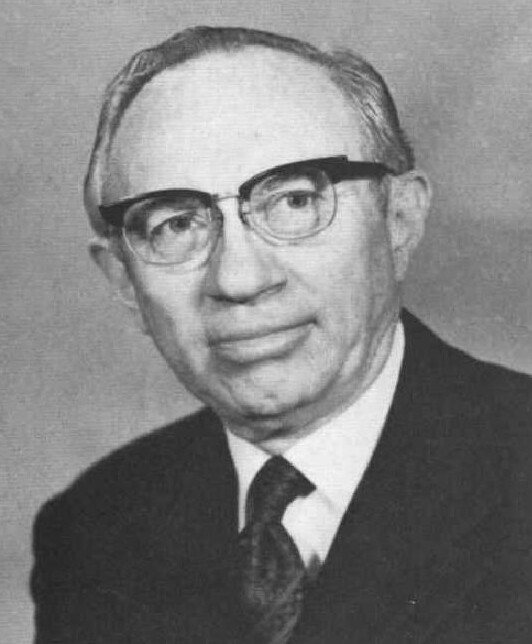
The temples in Europe would be unlike any others. In each of the Church’s eight operating temples, several trained ordinance workers guided patrons through a series of rooms decorated with murals representing stages of the plan of salvation. But ordinance workers would be hard to find with European Saints spread so thin across the continent, so the First Presidency wanted to use modern technologies to reduce the number of ordinance workers and the space needed for the endowment.
“You’ve had vast experience in preparation of films and materials of that kind,” President McKay said to Gordon. “I’m putting on your shoulders the responsibility of finding a way to do this.” And Gordon would have to start right away. The Swiss Temple would be finished in less than two years.
“Well, President,” Gordon said, “we’ll do what we can.” …
Filming Begins
Not long after receiving the assignment to help modify the presentation of the endowment, Gordon B. Hinckley assembled a team of professionals to produce a motion picture for the European temples. But by the spring of 1955, the film was still far from finished, and the Swiss Temple dedication was only a few months away.
Sensitive to the sacred nature of the endowment, President McKay authorized Gordon to shoot the film in the large assembly hall of the Salt Lake Temple—the same room where, more than sixty years before, Wilford Woodruff had dedicated the building.
Although temple workers normally performed the endowment wearing white suits and dresses, Gordon received permission to film the ceremony with actors in costumes. The committee hung a massive gray backdrop in the assembly room and positioned lights to illuminate the set, where artificial rocks dotted the ground amid large trees that had been hoisted through the temple windows with pulleys. To help portray the creation of the world, Gordon received permission from the Walt Disney Company to insert a short clip from the film Fantasia into the production.
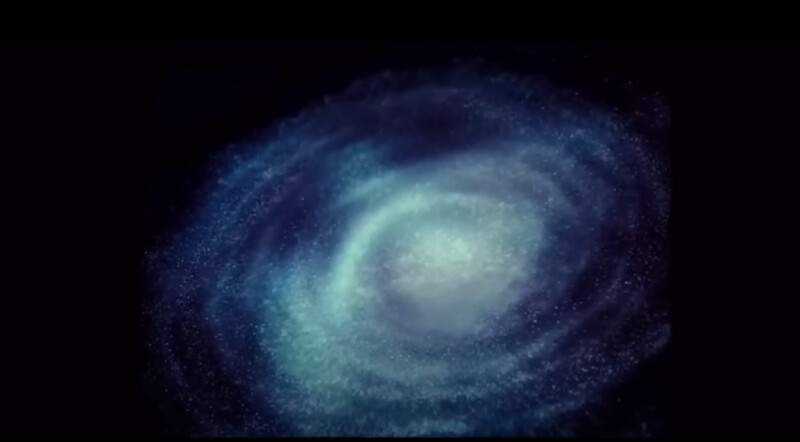
Everyone involved in the temple film, from the actors and crew to the editor and Gordon himself, worked on it in addition to their regular full-time jobs, giving up nights and weekends. By the end of May 1955, Gordon and the production team had put together an initial cut of the film, but Gordon was not satisfied with what he saw. The flow of the film seemed rough and choppy, and some of the acting and costuming needed work.
He reached out to Winnifred Bowers, the costumer who had been working on the film, to get advice on improving the production. She suggested ways to smooth out the transitions and recommended making small changes to the costumes. And she was sure the director, Harold Hansen, could help the actors adjust their performances after seeing what it looked like on-screen. “But with all this, Brother Hinckley,” Winnifred noted, “I think you’ve got it more figured out than you thought you had.”
Gordon and his team worked for several more weeks to refine the film. On June 23, they showed it to the general authorities, and President McKay was pleased with their work. “You’ve done a fine job,” he told Gordon and his team. “I think this is the way things should go.”
But their work was not yet done. Since the Church did not have the equipment necessary to dub motion pictures into other languages, Gordon and his team decided to reshoot the film in German, French, Danish, Dutch, Norwegian, and Swedish. Fortunately, the translations had already been done, but completing six more versions of the film would take months, even for a seasoned director.
Gordon did not have a lot of time. President McKay and all the Saints waiting to receive their temple blessings in Switzerland were depending on him. He could not rest until every film was complete and had arrived safely in Europe.
…
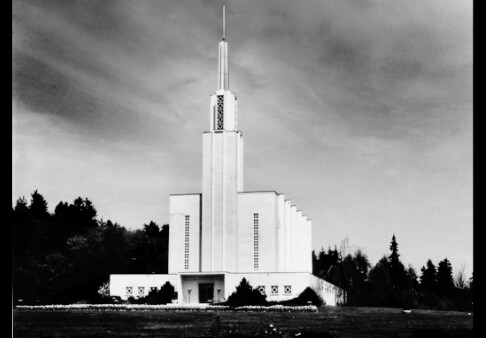
Stopped at Customs
Early in September 1955, about a week before the Swiss Temple dedication, Gordon B. Hinckley carefully placed two suitcases in the hands of airline employees at the Salt Lake City airport. The bags contained the completed temple film in all seven languages. He hated to let the thirty thousand feet of film out of his sight, but the suitcases were too bulky to bring into the cabin of the airplane that he and his wife, Marjorie, would take on the first leg of their trip to Switzerland. At least the accompanying audio tracks, stored separately in two compact canisters, were small enough that he could carry them himself.
Gordon had been anxious about protecting the sacred content of the film from the moment he sent it off to a lab in California for final processing. He had asked a close friend who worked in Hollywood to take the film to the lab and stay there to ensure its privacy while it was processed. Gordon now needed to see the film safely through airports in New York and London before delivering it personally to the Swiss Temple.
William Perschon, the new president of the Swiss-Austrian Mission, greeted the Hinckleys as they stepped off the plane in Basel. They retrieved the film, and Gordon filled out a customs declaration form, noting the film materials among his possessions. A customs official looked over the form and said, “I can’t let this in. We don’t permit the entry of film into Switzerland without clearance through the federal film board.”
“I have to get it in some way,” Gordon said. “You certainly permit film to come into Switzerland?”
“With proper clearance, yes,” the official replied. He then explained that the Swiss film board needed to review and approve the film before releasing it back into Gordon’s care. The official, meanwhile, would send it to the customs office in Bern. Since it was Saturday, Gordon would not be able to retrieve the film from customs until the office opened on Monday morning.
Gordon thought about trying to persuade the official to simply let him take the film to Bern himself, but he worried that an argument would make matters worse. So he and Marjorie left with President Perschon for the mission home, deeply concerned about the safety of the temple film. The following day, they fasted and prayed that the film would not fall into the wrong hands.
Early on Monday, Gordon and President Perschon picked up the reels at the customs office and took them directly to the film board. There a man ushered Gordon into a private room. “What is the title of this film?” he asked.
“It doesn’t have a title,” Gordon replied. “It’s just music and instruction to be used in this temple out here.” He offered to let the man listen to the audio track. As a precaution, he had put a long recording of organ music at the beginning of the film to deter any unauthorized person from accessing its sacred contents.
The man listened to the music for a while. “Well,” he finally said, “what is it?”
“It’s just church instruction,” Gordon repeated. “It’s church music, dull organ music.”
A look of friendly understanding then came over the man. “All right,” he said. Without asking to hear or see more, he took out a stamp and approved the film.

